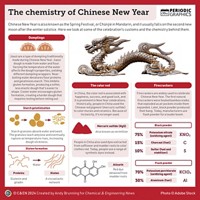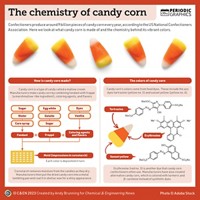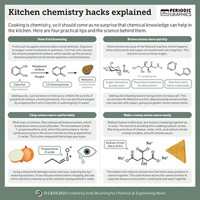Advertisement
Grab your lab coat. Let's get started
Welcome!
Welcome!
Create an account below to get 6 C&EN articles per month, receive newsletters and more - all free.
It seems this is your first time logging in online. Please enter the following information to continue.
As an ACS member you automatically get access to this site. All we need is few more details to create your reading experience.
Not you? Sign in with a different account.
Not you? Sign in with a different account.
ERROR 1
ERROR 1
ERROR 2
ERROR 2
ERROR 2
ERROR 2
ERROR 2
Password and Confirm password must match.
If you have an ACS member number, please enter it here so we can link this account to your membership. (optional)
ERROR 2
ACS values your privacy. By submitting your information, you are gaining access to C&EN and subscribing to our weekly newsletter. We use the information you provide to make your reading experience better, and we will never sell your data to third party members.
Materials
Periodic Graphics
Periodic Graphics: 6 chemical stories of colors through time
Chemical educator and Compound Interest blogger Andy Brunning paints a vivid picture of how colorants have been created and used throughout history.
by Andy Brunning, special to C&EN
February 26, 2024
| A version of this story appeared in
Volume 102, Issue 6


To download a pdf of this article, visit cenm.ag/chemicalcolors.
References used to create this graphic:
Mari, Francesco, Elisabetta Bertol, Vittorio Fineschi, and Steven B. Karch. “Channelling the Emperor: What Really Killed Napoleon?” J. R. Soc. Med.( 2004). DOI: 10.1258/jrsm.97.8.397.
Siddall, Ruth. “Sepia: The Grant Museum.” Pigment Timeline Project, University College London, July 29, 2016.
St. Clair, Kassia.The Secret Lives of Colour. John Murray Press, 2016.
Whitney, Carrie. “The Bizarre Link between Van Gogh’s Signature Yellow and Cow Urine.” HowStuffWorks, Feb. 28, 2023.
A collaboration between C&EN and Andy Brunning, author of the popular graphics blog Compound Interest
To see more of Brunning’s work, go to compoundchem.com. To see all of C&EN’s Periodic Graphics, visit cenm.ag/periodicgraphics.





Join the conversation
Contact the reporter
Submit a Letter to the Editor for publication
Engage with us on Twitter